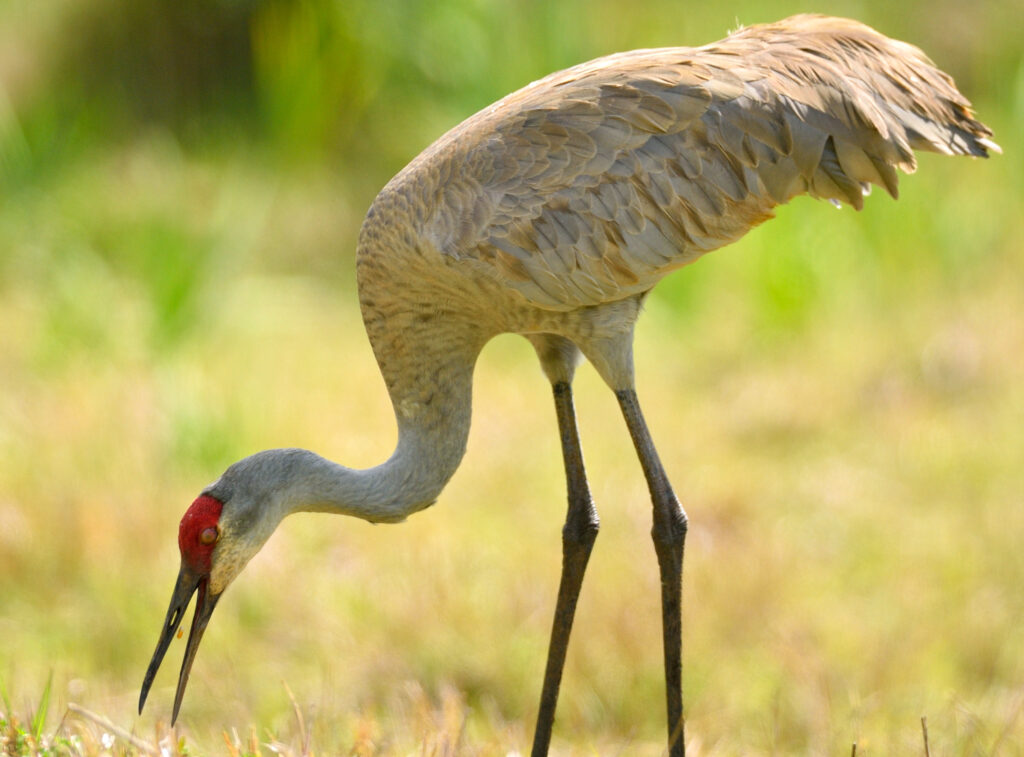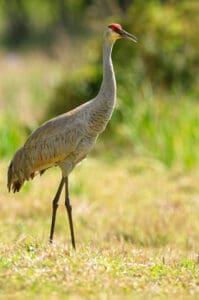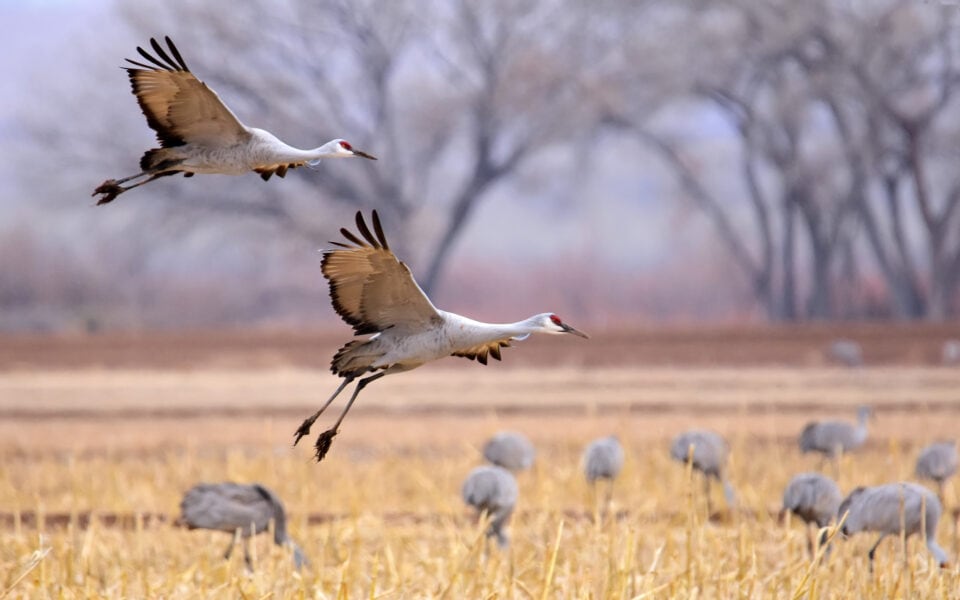Sandhill Crane, Fast Facts, Management & Trivia:

Tes Jolly
Considered one of the oldest bird species on earth, the sandhill crane (Grus canadensis) has soared North American air thermals for more than 2.5 million years. The earliest undisputed fossil was excavated in the Macasphalt Shell Pit in Florida. This spectacular long-legged bird with sharp bill and loud trumpeting call is a remarkable sight soaring gracefully on massive wings.
North American sandhill cranes are classified into five subspecies that total an estimated one million birds. Some biologists classify a sixth subspecies, the Canadian sandhill crane. There are six migratory populations that winter in southern states like Texas, Arizona and New Mexico. They return each spring to breeding grounds across North America and as far north as central Alaska. The Florida, Mississippi, and Cuban sandhills are non-migratory.
Sandhills live in varied habitats depending on their migratory status. Breeding grounds include open wetland habitat edges that meet upland habitat. They nest in marshes, wet meadows, prairies, bogs, burned over aspen stands, and other wet habitats. Non-breeders prefer more open, grassy areas. As omnivores, their diet includes waste grains, seeds, plant tubers, worms, snails, grubs, amphibians, small reptiles and rodents.
By 1916, commercial hunting had decimated the Eastern sandhill population for its plumage for the millinery (hat) market. The “Migratory Bird Act of 1918” ended all migratory bird hunting unless a regulated harvest and population-monitoring program was established. In 1925, the Eastern sandhill population numbered a scant 50 birds. Regulated hunting, wetland conservation efforts and protecting staging and wintering grounds helped sandhill populations recover over the past century to an estimated one million continent wide.
In general, the North American Waterbird Conservation Plan lists sandhills as a “species of low concern.” However, Mississippi sandhills are endangered, mainly from conversion of wet pine savanna habitat into pine plantations. The Florida and Cuban populations are classified as threatened.
Hunting sandhill cranes continues to grow since the first hunts in 1961. Sixteen states offer crane hunting. Most are limited seasons requiring a special permit. Nicknamed “ribeye of the sky” by hunters, the bird’s breast is extolled for its delectable flavor.
Did You Know the Sandhill Crane…

Tes Jolly
- The sandhill crane is named for Nebraska’s Sandhills area on the Platte River, an important stopover as nearly a half a million lesser sandhills migrate through yearly.
- The adult sandhill weighs 6 to14 pounds, stands 3-4 feet tall and wings span up to 7.5 ft.
- The adult sandhill has a distinctive red forehead and white cheeks with gray plumage overall.
- Using air thermals for lift, a sandhill stays airborne for many hours, only occasionally flapping its massive wings. They’ve been sighted soaring over Mt. Everest.
- Their life span is 20+ years. The oldest recorded was 36 years and 7 months.
- The sandhill soars, flying 25-35 mph and usually travels 200-300 miles daily. With a favorable tailwind, it may travel 500 miles or more.
- Sandhills are monogamous, choosing a partner based on a gracefully spirited dance and loud calling displays. Courting pairs perform together as they pump their heads, bow, extend their wings, and leap into the air while calling. Chicks, called a “colt,” is raised and remains with its parents for 9 months.
- A group of sandhill cranes is called a sedge, siege or herd.
- It can stand in near-freezing water for long periods because the body constricts blood vessels in the feet, reducing the amount of blood that needs warming. Leg veins and arteries run parallel so colder blood is warmed before it enters back into the body.
- The long bill, feet and legs are foraging tools and defensive weapons. The serrated bill probes frozen ground, grasps slippery snakes and worms and stabs attackers. Long legs, toes and claws expose food. If threatened it will hiss, use it’s wings to stay balanced, then jump and strike with feet and claws.
cover photo: Nina B
Join our weekly newsletter or subscribe to GameKeepers Magazine.
Your source for information, equipment, know-how, deals, and discounts to help you get the most from every hard-earned moment in the field.








